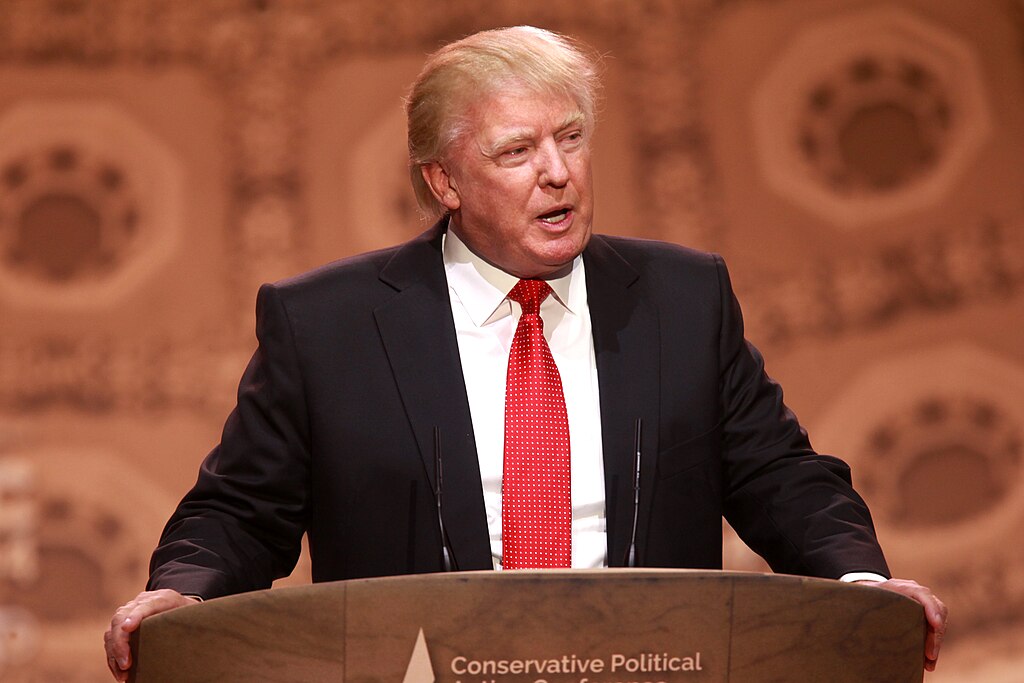The global economy faces a transformative year in 2025 as President-elect Donald Trump prepares to implement sweeping tariffs, ushering in a new era of trade policies. Wells Fargo’s recent economic forecast outlines the profound implications of these measures, projecting a cautious outlook marked by slower growth and elevated inflation.
U.S. Economy: Growth Slows Amid Tariff Pressure
Central to Trump’s economic agenda is the reintroduction of tariffs, including a 5% duty on all imports and a 30% tariff on Chinese exports. While these policies aim to correct trade imbalances, Wells Fargo strategists predict they will hinder economic expansion. U.S. GDP growth is forecast to slow to 2.0% in 2025, down from 2.7% in 2024.
Despite slower growth, inflation is expected to remain above the Federal Reserve’s 2% target. The core personal consumption expenditures (PCE) price index is projected to hover at 2.5% through 2026. In response, the Fed may adopt a measured easing strategy, with the federal funds rate likely to settle in the 3.50%-3.75% range.
“Trump 2.0 tariffs are likely to disrupt, not upend, the U.S. economy,” Wells Fargo strategist Nick Bennenbroek noted. “Economic expansion will persist but at a reduced pace, with inflationary pressures continuing.”
Global Ripple Effects: Winners and Losers
The impact of U.S. tariffs is expected to ripple through international markets, creating divergent economic outcomes. Emerging economies heavily reliant on U.S. trade, such as Mexico and China, are particularly vulnerable. Mexico, which sends nearly 80% of its exports to the U.S., faces the possibility of a recession in 2025. Meanwhile, China is forecast to experience subdued growth of 4.0%, despite efforts to offset the tariffs' effects.
Conversely, economies less reliant on trade, such as India and Brazil, may demonstrate resilience. These nations benefit from robust domestic demand and investment, allowing them to weather the global protectionist climate. Wells Fargo notes that India and Brazil are “powered by domestic growth, insulating them from rising tariffs.”
Currency markets are expected to mirror these shifts. Emerging market currencies may depreciate under pressure, while nations with closed economies or hawkish monetary policies could see greater stability.
Public Reactions Spark Debate
Trump’s proposed tariffs have drawn strong reactions on social media, with many expressing concern over their potential consequences:
- @EconOutlook2025: “Tariffs are a double-edged sword. Slower growth AND higher inflation? What are we signing up for? #EconomicPolicy”
- @GlobalTradeGuru: “Mexico’s recession is almost guaranteed if Trump’s tariffs go through. A devastating blow to their economy. #TradeWars”
- @InvestSmart: “India and Brazil might come out as winners. A silver lining amid Trump’s economic disruption. #EmergingMarkets”
- @FinanceObserver: “Wells Fargo’s projections show Trump’s tariffs are no joke. Global markets better brace themselves. #EconomicOutlook”
- @PolicyCritic101: “Trump’s tariffs could inflate costs for everyday Americans. Who really wins here? #TrumpEconomics”
- @MoneyMatters: “The Fed may lower rates, but will it be enough to counteract the inflation from tariffs? #MonetaryPolicy”



 Gold and Silver Surge as Safe Haven Demand Rises on U.S. Economic Uncertainty
Gold and Silver Surge as Safe Haven Demand Rises on U.S. Economic Uncertainty  Trump Orders Blockade of Sanctioned Oil Tankers, Raising Venezuela Tensions and Oil Prices
Trump Orders Blockade of Sanctioned Oil Tankers, Raising Venezuela Tensions and Oil Prices  South Korea Warns Weak Won Could Push Inflation Higher in 2025
South Korea Warns Weak Won Could Push Inflation Higher in 2025  Oil Prices Climb on Venezuela Blockade, Russia Sanctions Fears, and Supply Risks
Oil Prices Climb on Venezuela Blockade, Russia Sanctions Fears, and Supply Risks  Asian Fund Managers Turn More Optimistic on Growth but Curb Equity Return Expectations: BofA Survey
Asian Fund Managers Turn More Optimistic on Growth but Curb Equity Return Expectations: BofA Survey  RBA Unlikely to Cut Interest Rates in 2026 as Inflation Pressures Persist, Says Westpac
RBA Unlikely to Cut Interest Rates in 2026 as Inflation Pressures Persist, Says Westpac  Austan Goolsbee Signals Potential for More Fed Rate Cuts as Inflation Shows Improvement
Austan Goolsbee Signals Potential for More Fed Rate Cuts as Inflation Shows Improvement  Asian Stocks Edge Higher as Tech Recovers, U.S. Economic Uncertainty Caps Gains
Asian Stocks Edge Higher as Tech Recovers, U.S. Economic Uncertainty Caps Gains  Trump Expands U.S. Travel Ban to Antigua and Barbuda, Dominica, Sparking Economic Fears in the Caribbean
Trump Expands U.S. Travel Ban to Antigua and Barbuda, Dominica, Sparking Economic Fears in the Caribbean  Dan Bongino to Step Down as FBI Deputy Director After Brief, Controversial Tenure
Dan Bongino to Step Down as FBI Deputy Director After Brief, Controversial Tenure  Silver Prices Hit Record High as Safe-Haven Demand Surges Amid U.S. Economic Uncertainty
Silver Prices Hit Record High as Safe-Haven Demand Surges Amid U.S. Economic Uncertainty  Federal Appeals Court Allows Trump’s National Guard Deployment in Washington, D.C. to Continue
Federal Appeals Court Allows Trump’s National Guard Deployment in Washington, D.C. to Continue  U.S. Stock Futures Slip After CPI-Fueled Rally as Markets Weigh Economic Uncertainty
U.S. Stock Futures Slip After CPI-Fueled Rally as Markets Weigh Economic Uncertainty  Chinese Robotaxi Stocks Rally as Tesla Boosts Autonomous Driving Optimism
Chinese Robotaxi Stocks Rally as Tesla Boosts Autonomous Driving Optimism  Japan Exports to U.S. Rebound in November as Tariff Impact Eases, Boosting BOJ Rate Hike Expectations
Japan Exports to U.S. Rebound in November as Tariff Impact Eases, Boosting BOJ Rate Hike Expectations  U.S. House Advances GOP Healthcare Bill as ACA Subsidies Near Expiration
U.S. House Advances GOP Healthcare Bill as ACA Subsidies Near Expiration  Asian Currencies Slip as Dollar Strengthens; Indian Rupee Rebounds on Intervention Hopes
Asian Currencies Slip as Dollar Strengthens; Indian Rupee Rebounds on Intervention Hopes 































